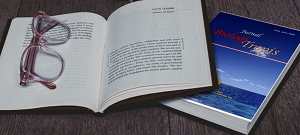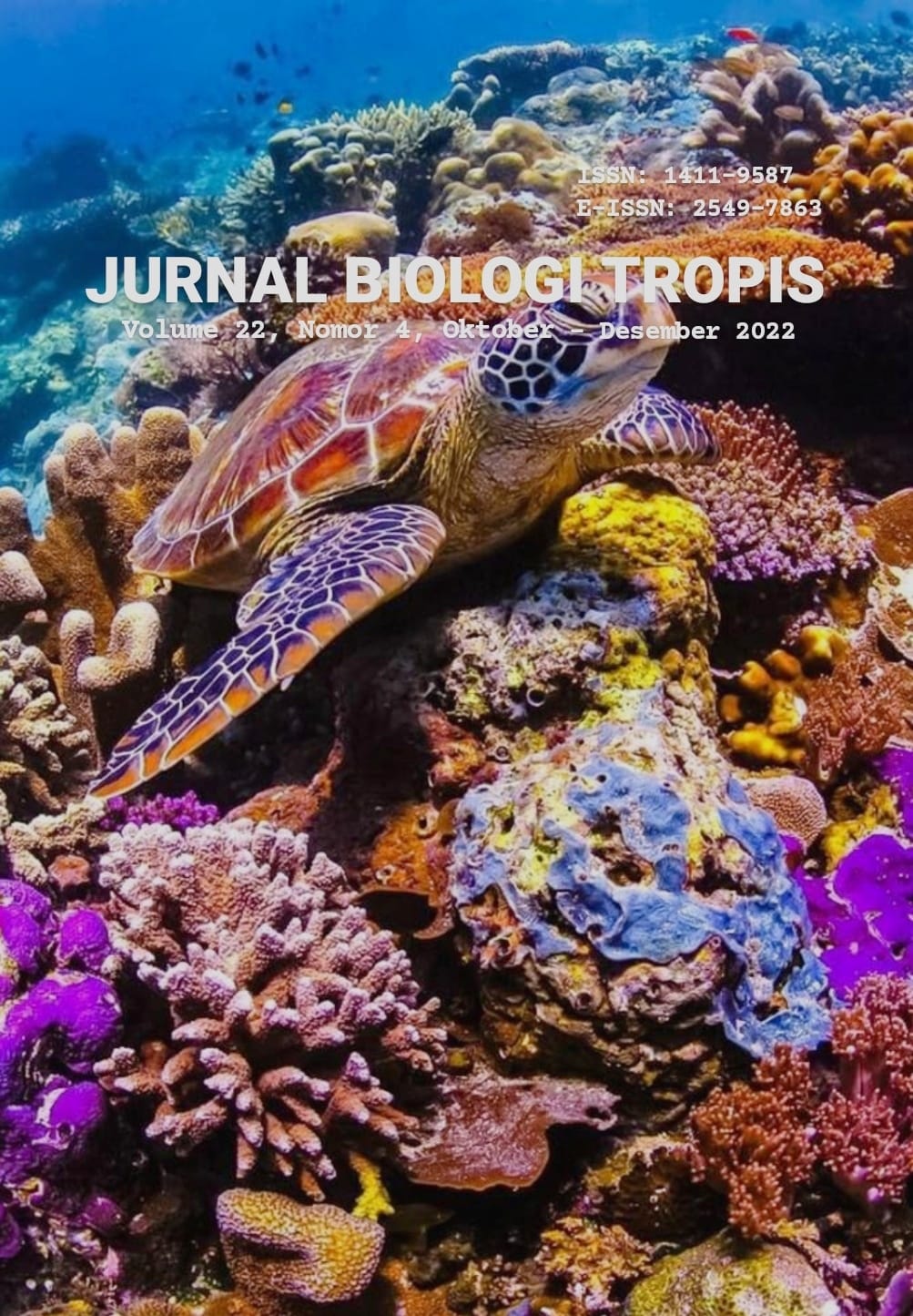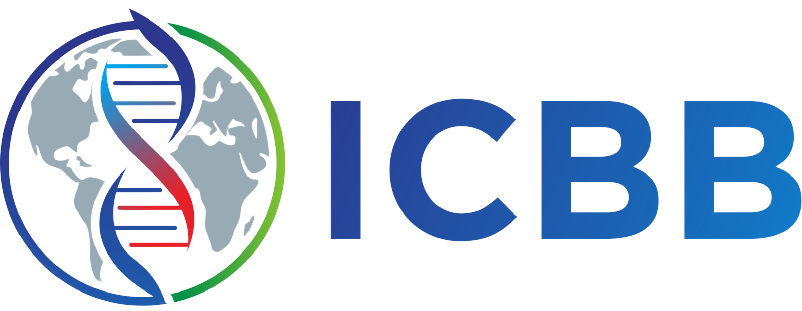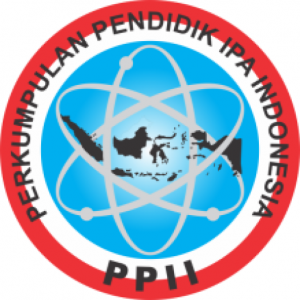
Most read articles by the same author(s)
- Mastur Mastur, Oscar Yanuarianto, Dedy Supriadin, Ridwan Saedi, Yusuf Akhyar Sutaryono, Sukarne Sukarne, The Potential of Corn Waste (zea mays L.) as Ruminants Feed in Bolo District, Bima Regency , Jurnal Biologi Tropis: Vol. 22 No. 2 (2022): April - June
- Vebera Maslami, Azhary Noersidiq, Fahrullah Fahrullah, Dwi Kusuma Purnamasari, I.K.G. Wiryawan, Erwan Erwan, Syamsuhaidi Syamsuhaidi, Sumiati Sumiati, BQ. Nahya Rohima, An Examination of The Aflatoxin Concentration of Corn and How It Affects Laying Hen Performance on Farms in North Lombok Regency , Jurnal Biologi Tropis: Vol. 24 No. 2 (2024): April - Juni
- Fahrullah Fahrullah, Djoko Kisworo, Bulkaini Bulkaini, Haryanto Haryanto, Baiq Rani Dewi Wulandani, Wahid Yulianto, Azhary Noersidiq, Vebera Maslami, The Effects of Plasticizer Types on Properties of Whey-Gelatin Films , Jurnal Biologi Tropis: Vol. 23 No. 3 (2023): July - September
- Azhary Noersidiq, Syamsul Hidayat Dilaga, Suhubdy Suhubdy, Muhamad Amin, Fahrullah Fahrullah, Vebera Maslami, Urea’s Effect on Dry Matter, Organic Matter, and Crude Protein Content of Ammoniated Corn Straw , Jurnal Biologi Tropis: Vol. 23 No. 4 (2023): October - December
- Fahrullah Fahrullah, Bulkaini Bulkaini, Djoko Kisworo, Wahid Yiulianto, Baiq Rani Dewi Wulandani, Haryanto Haryanto, The Water Content, Solubility, and Optical Properties of Whey-Gelatin Multilayer Films Enriched with Green Tea Powder , Jurnal Biologi Tropis: Vol. 23 No. 4 (2023): October - December
- Made Sriasih, Sulaiman N Depamede, Wayan Wariata, Muhamad Ali, Anwar Rosyidi, Hasma Hasma, Imron Hadi, Prevalence of helminthiasis and identification of worm species in buffaloes on smallholder farms in Jerowaru sub-district, East Lombok , Jurnal Biologi Tropis: Vol. 24 No. 1 (2024): Januari - Maret
- Wahid Yulianto, Lilik Malta, Bulkaini Bulkaini, Djoko Kisworo, Haryanto Haryanto, Baiq Rani Dewi Wulandani, Fahrullah Fahrullah, Physical and Microbiology Characterization of Chicken Sausage that Added by Oyster Mushroom , Jurnal Biologi Tropis: Vol. 24 No. 1 (2024): Januari - Maret
- Vebera Maslami, Azhary Noersidiq, Fahrullah Fahrullah, Dwi Kusuma Purnamasari, Yetti Marlida, Mirnawati, Yuliaty Shan Nur, Effect of Glutamate Supplementation in Broiler Chicken Feed to The Quality of Carcass , Jurnal Biologi Tropis: Vol. 23 No. 2 (2023): April-June
- N. Haiza, K. Sumadi, N. W. Siti, Bulkaini Bulkaini, Djoko Kisworo, Fahrullah Fahrullah, The Effect of Providing Fermented Pineapple Peel in The Ration on The Performance of Peking Ducks , Jurnal Biologi Tropis: Vol. 23 No. 4 (2023): October - December
- Syamsul Hidayat Dilaga, Azhary Noersidiq, Fahrullah Fahrullah, Organoleptic Quality and pH of Silage of Young Corn and Sorghum , Jurnal Biologi Tropis: Vol. 23 No. 1 (2023): Special Issue
Similar Articles
- Sukarne Sukarne, Muhammad Nursan, The Effect of Feeding Duck Mie (Innovation in Noodle-shaped Duck Feed) on Income Over Feed Cost , Jurnal Biologi Tropis: Vol. 22 No. 1 (2022): January - March
- Mayumi Agestia Sesariana, Fathul Djannah, Triana Dyah Cahyawati, Novia Andansari Putri Restuningdyah, Difference In Knowledge About Stunting Among Families with Stunted Children and Non-Stunted Children in Labuhan Haji Village, East Lombok , Jurnal Biologi Tropis: Vol. 25 No. 4 (2025): Oktober-Desember
- I Wayan Lanus Sumadiasa Wayan, Correlation Beetwen Body Weight with Scrotal Circumference, Testis Weight and Sperm Production of Boer Buck Intensively Rearing , Jurnal Biologi Tropis: Vol. 23 No. 1 (2023): January - March
- Husnul Marifah, Candra Eka Puspitasari, Ida Ayu Eka Widiastuti, Evaluation of The Quality of Antibiotic Use in Urinary Tract Infection Patients in hospitalization installations of NTB Provincial Hospital in 2019 , Jurnal Biologi Tropis: Vol. 22 No. 3 (2022): July - September
- Sukarne Sukarne, Muhammad Nursan, Effectiveness Test of Duck Mie (Innovation of Noodle-shaped Feed) on Peking Duck Productivity , Jurnal Biologi Tropis: Vol. 22 No. 2 (2022): April - June
- Elva Triyana, Elfrida Elfrida, Teuku Hadi Wibowo Atmaja, Effectiveness of Elephant Grass (Pennisetum purpureum) Green Fertilizer on the Growth of Soybean Plants (Glycine max L. Merrill) , Jurnal Biologi Tropis: Vol. 24 No. 3 (2024): July - September
- Komang Pranayoga Prandhana Putra Nartha, Prima Belia Fathana, Rina Lestari, Factors Related to Outcome and Length of Hospital Stay for Elderly Patients with COVID-19 at Mataram University Hospital in 2020-2021 , Jurnal Biologi Tropis: Vol. 22 No. 4 (2022): October - December
- Khairifathiyyah Khairifathiyyah, Ida Bagus Putra Bayu Aryasta, I Nyoman Dio Yudha Prawira, Lania Pradiva Untari, Balqis Prudena Kurnia Pambudi, Ilsa Hunaifi, Cerebral Stroke Secondary to Decompression Ilness (DCI): Pathophysiology, Clinical Presentation, Diagnosis, and Management , Jurnal Biologi Tropis: Vol. 25 No. 4a (2025): Special Issue
- Fahrullah Fahrullah, Basriani Basriani, Cis Anita, Farah Febryanti, Fitri Fitri, Modification of Protein-Based Edible Film Characteristics with Different Glycerol Concentrations: A Study on Thickness, Gelation, and Microstructure , Jurnal Biologi Tropis: Vol. 24 No. 4 (2024): Oktober - Desember
- Radiah Meilani Putri, Rizqy Agung Fatahillah T., Anjela Fatma Lovely, Fauzan Faqih, Andrew Deardo Purba G., Qashrina Vania Fildzani, Rifky Sandya Rakadi P., Sleep Disorders in Post Stroke Patients : A Literature Review , Jurnal Biologi Tropis: Vol. 24 No. 4 (2024): Oktober - Desember
<< < 1 2 3 4 5 6 7 8 9 10 > >>
You may also start an advanced similarity search for this article.



























